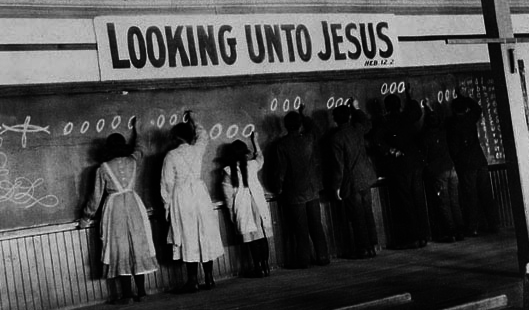 https://www.google.com/search?q=indian+boarding+schools&biw=1366&bih=613&source=lnms&tbm=isch&sa=X&ved=0ahUKEwjh_obWrIDSAhXFsFQKHYIwAQ0Q_AUIBygC#imgrc=O9WI0EJRDiX-cM:
https://www.google.com/search?q=indian+boarding+schools&biw=1366&bih=613&source=lnms&tbm=isch&sa=X&ved=0ahUKEwjh_obWrIDSAhXFsFQKHYIwAQ0Q_AUIBygC#imgrc=O9WI0EJRDiX-cM:
What happened inside of the walls of the Indian Boarding School that was to the right here?
Let’s look to history for some feasible answers.
(all bold mine)
RICHARD PRATT — “KILL THE INDIAN, SAVE THE MAN”
The Social Welfare Forum: Official Proceedings [of The] Annual Forum
As we have taken into our national family seven millions of Negroes, and as we receive foreigners at the rate of more than five hundred thousand a year, and assimilate them, it would seem that the time may have arrived when we can very properly make at least the attempt to assimilate our two hundred and fifty thousand Indians, using this proven potent line, and see if that will not end this vexed question and remove them from public attention, where they occupy so much more space than they are entitled to either by numbers or worth.
Children are educated to become responsible and free thinking adults in the future; however, those were not Elazor Wheelock’s goals when he began Dartmouth College in 1769. To the contrary of genuine educational goals, Indian Boarding Schools used forced assimilation and cultural destruction with a military regimen to “at least the attempt to assimilate our two hundred and fifty thousand Indians.”
Indian boarding schools usually imitated military life. Children were forced to cut their hair, wear uniforms, and march in formations. Rules were very strict and discipline was often harsh when rules were broken.
Just how did the “schools” come into reality? Christian denominations were given power to build them on reservations as the result of Ulysses S. Grant’s “peace policy.”
(photo added)
Source The policy pursued toward the Indians has resulted favorably, so far as can be judged from the limited time during which it has been in operation. Through the exertions of the various societies of Christians to whom has been entrusted the execution of the policy, and the board of commissioners authorized by the law of April 10, 1869, many tribes of Indians have been induced to settle upon reservations, to cultivate the soil, to perform productive labor of various kinds, and to partially accept civilization.They are being cared for in such a way, it is hoped, as to induce those still pursuing their old habits of life to embrace the only opportunity which is left them to avoid extermination.
I recommend liberal appropriations to carry out the Indian peace policy,
not only because it is humane, Christian like, and economical, but because it is right.www.google.com/…:
Those Christian denominations also had leverage with the B.I.A., yet only in terms of carrying out the “peace policy” on reservations.
Now that the general historical context has been set with specifics, what were the means to the “cultural destruction and forced assimilation?” Clearly put, it’s categorized into the following: physical abuse, mental abuse, emotional abuse, spiritual abuse, sexual abuse, willful negligence resulting in illness and death; and murder. Ironically, Friends of the American Indian and Thomas Morgan believed those were merely the lesser evils. (photo added)
Source The choices seemed simple and stark to the reformer movement — either kill all the Indians or assimilate them into white civilization through education
www.google.com/…:
Source “We must either fight Indians, feed them, or else educate them. To fight them is cruel, to feed them is wasteful, while to educate them is humane, economic, and Christian.”
Some examples of extremely poor sanitation conditions, dietary deficiency, extraordinary abuse, death in the Indian Boarding Schools; and overall context preceding Indian Boarding Schools are:
extremely poor sanitation conditions (pg.13),
They are in themselves reasonably satisfactory, but they shut off light and air from the inside rooms, which are still filled.with beds beyond their capacity. The toilet facilities have in many cases not been increased proportionately to the increase in pupils, and they are fairly frequently not properly maintained or conveniently. located. The supply of soap and towels has been inadequate.
dietary deficiency,
The survey staff finds itself obliged to say frankly and unequivo- cally that the provisions for the care of the Indian children in boarding schools are grossly inadequate. The outstanding deficiency is in the diet furnished the Indian children, many of whom are below normal health. The diet is deficient in quantity, quality, and variety. The effort has been made to feed the children on a per capita of eleven cents a clay. plus what can be produced on the schoolfarm, including the dairy.
extraordinary abuse, cultural genocide,
Source When they got to Carlisle, the students were extremely homesick. Their long hair was cut. One boarding school student, Lone Wolf of the Blackfoot tribe, remembered: “[Long hair] was the pride of all Indians. The boys, one by one, would break down and cry when they saw their braids thrown on the floor. All of the buckskin clothes had to go and we had to put on the clothes of the White Man. If we thought the days were bad, the nights were much worse. This is when the loneliness set in, for it was when we knew that we were all alone. Many boys ran away from the school because the treatment was so bad, but most of them were caught and brought back by the police.”
www.google.com/…:
Source They were forbidden to practice their religion and were forced to memorize Bible verses and the Lord’s Prayer.
extraordinary physical, mental, emotional, sexual, and spiritual abuse;
Source Rose was strapped for speaking her language. This is a common practice in schools all over the place at the time. Her open hands were hit with a large thick leather strap, many times.
I received the strap on several occasions, although not as harshly as Rose did in my story. I did see many native children whose hands were strapped so long and hard that they were blistered for days, as though they had been burned with fire.
Source Indian Boarding School Abuse – Including Child Molestation In the late 19th century, the Bureau of Indian Affairs (in conjunction with various churches) placed thousands of Native American children into Indian Boarding Schools. At the boarding schools, the children were forced to give up their Indian heritage and were forbidden from speaking their native languages. They were routinely beaten and sexually abused, and some even died.
Death in the Indian Boarding Schools is what we’ll learn about next. Here is a letter that author and professor of American Studies at the University of Minnesota, Brenda J. Child posted, Boarding School Seasons: American Indian Families, 1900-1940 (North American Indian Prose Award Series) (Paperback) by Brenda J. Child,that informs a parent of the death of its child from an Indian Boarding School.
 “If I were to die tomorrow, would you even care”
“If I were to die tomorrow, would you even care”
(Italics mine)
Source (letter is no longer up, this is the old address) Dear Sir, It is with a feeling of sorrow that I write you telling of the death of your daughter Lizzie. She was sick but a short time and we did not think her so near her end. Last Wednesday I was called away to Minneapolis and I was very much surprised upon my return Saturday evening to find she was dead, as they had given us no information except she might live for a number of months. Those that were with her say she did not suffer, but passed away as one asleep. I am very sorry that you could not have seen your daughter alive, for she had grown quite a little and improved very much since you let her come here with me. If we had known she was going to live but so short a time, we would have made a great effort to have gotten you here before she died. So wrote the superintendent of Flandreau Indian School to the father of a student who died of tuberculosis in a government boarding school in 1907. …Hundreds of children like Lizzie died at boarding school, never to return to their families and communities.
“Please remember me when I’m in the grave”
Unmarked graves shed light on ‘America’s best kept secret’ of abuse towards Native communities.
Small, 56, conducted the survey using ground penetrating radar as part of her master’s thesis research at Montana State University.
In the school’s historical records, she had found autograph books from the 1890s in which children wrote private messages to each other.
“Please remember me when I’m in the grave,” one boy who was re-named Danny Boone by the school staff, had written to a friend.
and lastly, the overall context preceding Indian Boarding Schools.
(1)Kurt Kaltreider, PH.D. “American Indian Prophecies,” p.44:
…It is estimated that 100 million Indians from the Caribbean, Central, South, and North America perished at the hands of the European invaders. Sadly, unbelievably, really, much of that wholesale destruction was sanctioned and carried out by the Roman Catholic Church and various Protestant denominations.(1: p.37)
What is just one devastating consequence of all this? Boarding School Intergenerational Trauma, which is being addressed by indigenous people who still suffer from its devastating effects.
Source Working to heal the wounds of boarding school United Nations panel hopes to undo the damage caused by U.S. government’s Indian boarding school policies By Karen Lynch
“People in Indian country are still becoming aware of the effects of boarding school trauma,” said Dr. Eulynda Toledo-Benalli, Dine’, currently performing boarding school healing project research with the Navajo people. “This is something about our history that is not being talked about in a way that encourages healing from its intergenerational trauma…”
As a panelist, Dr. Toledo-Benalli said the pain she suffered as a second-generation survivor affected not only herself but her children, as well. “Many times I have said to my children that I’m sorry for the way I treat them. This is so, because parents learn parenting skills from their parents. It is said that the oppressed become the oppressors.
As Dr. Toledo-Benalli talked about the painful memories as a survivor, the memory of her father who was “snatched and taken to Colorado, to a place that he did not know even existed. My mother who was herding sheep was also snatched.
Additionally, the Wellbriety Movement helps with boarding school intergenerational trauma as well.
Source The Healing Forest Model
The unhealed forest (community, left) transforms itself into a healed forest (right) by participating in and utilizing Wellbriety Movement activities, programs, and learning resources. The destructive roots of anger, guilt, shame and fear of the unhealed forest become the four gifts of the Sacred Hoop: Forgiving the Unforgivable, Healing, Unity and Hope. The wounded trees become healthy trees and the community participates in wellness involvements, such as, sober powwows, tradition, culture and spirituality. These are some of the gifts of the Wellbriety Movement.
I hope with all my heart that those relatives, known and unknown, who still suffer are able to find the peace and resolution they need for themselves and their loved ones. Peace.
See also Children Left Behind: The Dark Legacy of Indian Mission Boarding Schools by Tim Giago
Here is a previous version of this diary. Some of the links no longer work, as well as here.

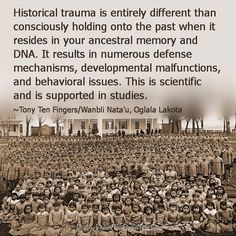

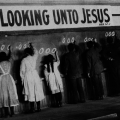

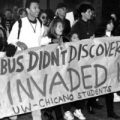
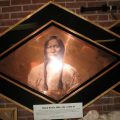
Leave a Reply